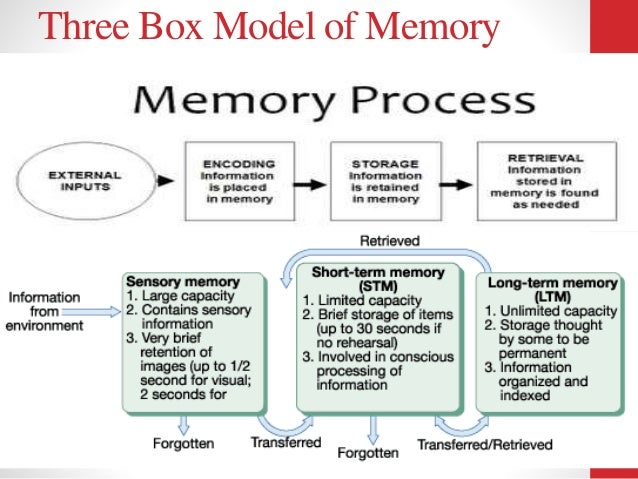
This memory is used for memorizing information and using it later for task completion. This memory is the “go-between” short-term and long-term memories. Working memory vs short term memory: Working memory is often confused with short-term memory. Short-term memory can be improved by repeatedly rehearsing the content.

Short-term memory: This type of memory lasts only between 20-30 seconds before they begin decaying rapidly. The stronger the emotions caused by memory, the easier it is to recall the event. Emotions play a major role in the systems of memory and of recall. Long-term memory: This memory is used for storing and recalling information at a later stage. Information is stored based on 3 levels of memory:ġ. In this process, the information is stored, transformed, and reorganized with new reference points. Storing: This is the second process wherein the encoded information is preserved for future use. (Ex: Fatigue, motivation, interest, etc.) Subjective : These external variable factors that affect the process of encoding. (Ex: Temperature, humidity, socio-economic conditions, etc). Environment : These are the conditions that can either inhibit or stimulate the process of memorization. Content: The type of content to be encoded can be impacted by the structure, size, and subject of the content and the learner’s familiarity with it. The formation of memory is generally classified into three memory processes or three stages of memory in order:Įncoding: This process is involved in memory formation and depends on three factors:ġ. Memory is an active, reflective, and subjective process of previous experiences. Some questions you'd like to have answered would be: how many pieces of information can short term memory hold, how long does sensory memory last, what is the process by which information gets into memory, and where are long term memories stored. In order to understand memory and knowledge retention in any context, we must understand the principles behind them and other words for memories. In fact, the team at EdApp has gone further to create an algorithm-based feature to automatically create interactive lessons based upon the core, previously learned content through Brain Boost spaced repetition app. Not many Learning Management Systems (LMS) host a built-in feature designed specifically to help promote knowledge retention through distributed practice, but the microlearning platform, EdApp, does.
#3 main steps creating memories professional
In terms of learning – particularly for training in professional environments – the focus is on embedding learning concepts into long-term memory, which is a common challenge for businesses to master.

To make sense of memory and its properties, it can be split into three categories: Long-term, short-term, and working memory. However, if this happens instantly it becomes part of a memory. If the acquisition of new skills or knowledge is slow then it is classified as learning. These two concepts can also be differentiated based on the speed at which both processes happen. While learning involves the acquisition of skills and knowledge, memory is the expression of what has been acquired.


 0 kommentar(er)
0 kommentar(er)
